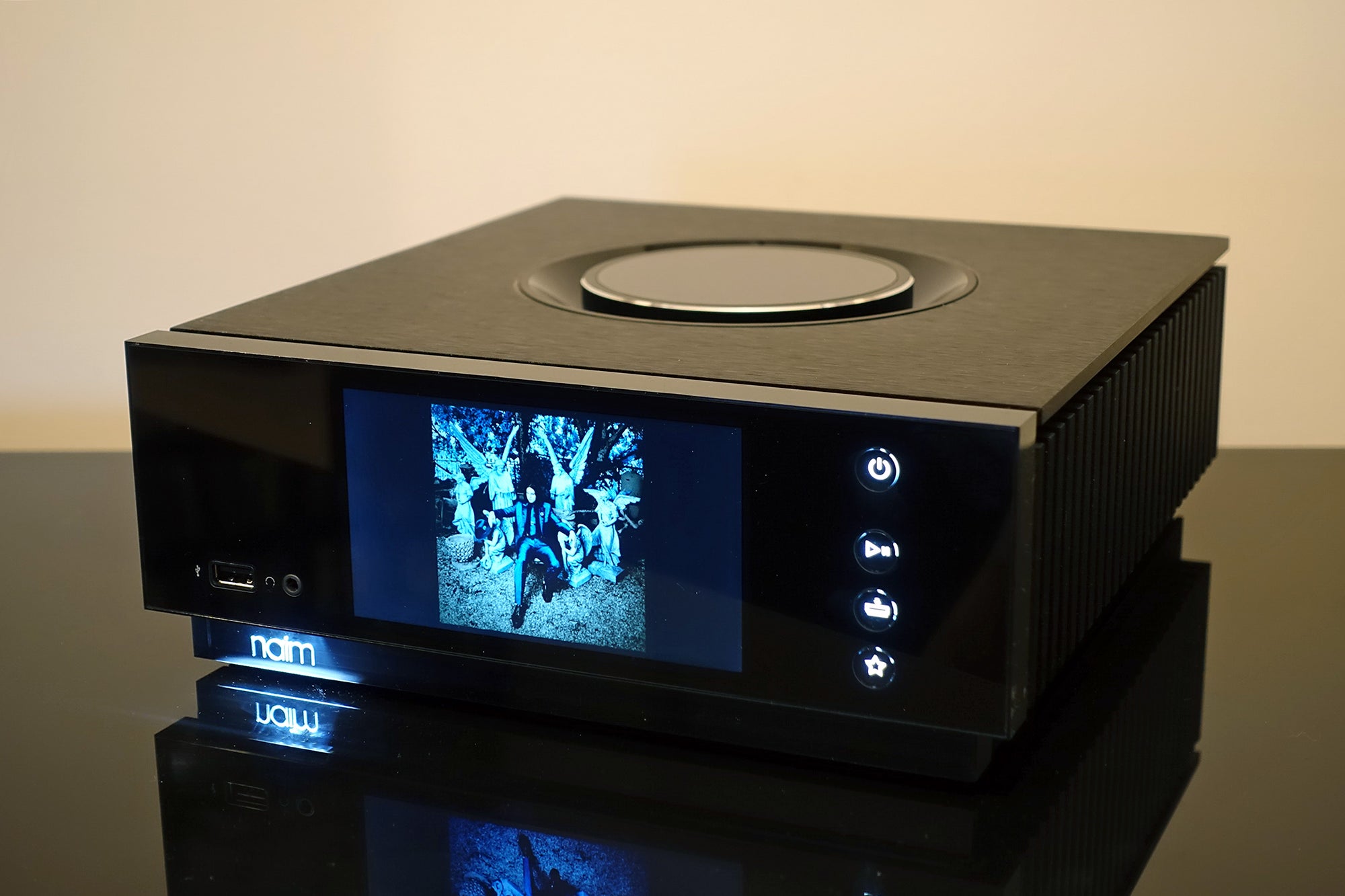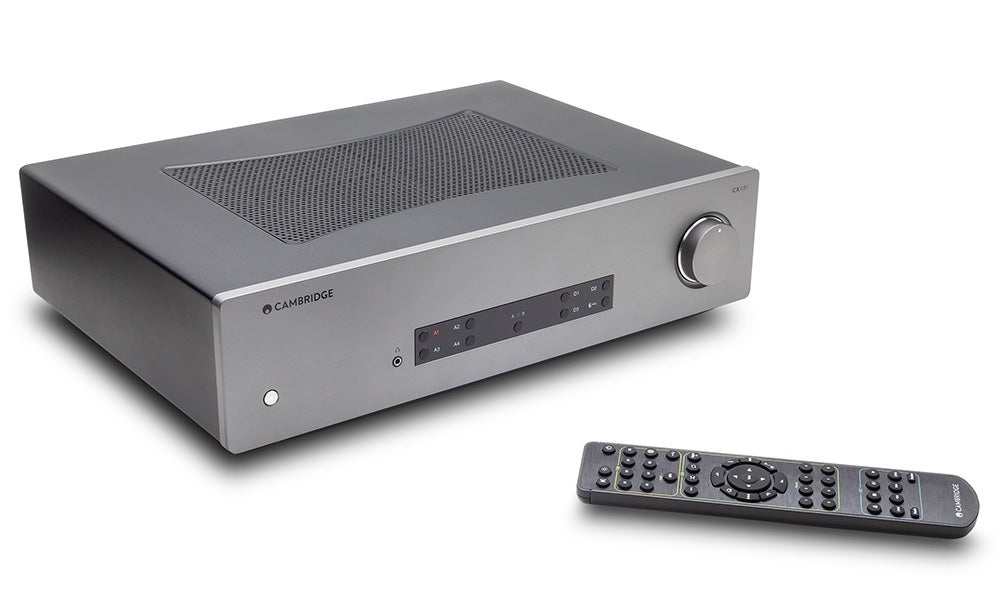NAD C3050 LE Review
NAD celebrates its 50th birthday with a cracking amplifier
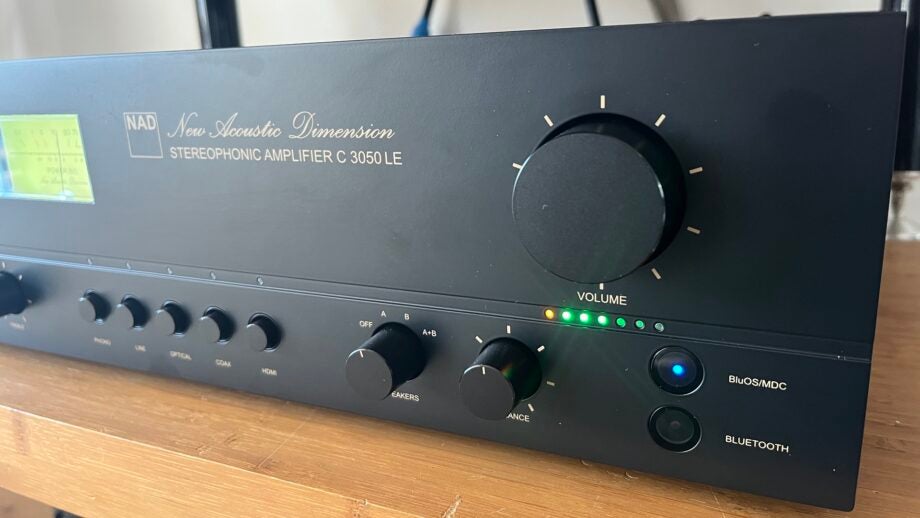

Verdict
Sometimes, older-looking equipment attempting to embrace more modern technologies can have a hint of the pensioner on an eScooter about it. Happily, that is emphatically not the case here.
Pros
- Old-school looks with uber-modern specification
- Balanced, articulate and mature sound
- Great control options
Cons
- Can sound in need of more power
- Dialling in more volume takes a while
- Hard to come by
Availability
- UKRRP: £1799
- USATBC
- EuropeTBC
- CanadaTBC
- AustraliaTBC
Key Features
- DACFeatures a 24-bit/192kHz DAC
- Power100 Class D watts per channel
- Retro stylingVU meters!
- ConnectionsBluetooth 5.0 with aptX HD, HDMI eARC, phono stage
Introduction
How do you celebrate a big birthday? By letting everyone make a fuss of you and give you nice gifts? Well, that’s not how NAD is rolling on the occasion of its 50th birthday…
The NAD C3050 LE costs £1799, and at the time of writing might possibly be available to buy. The clue’s in the model name, you see – the LE stands for limited edition.
NAD officially built just 1972 examples of the C3050 LE (because the company was founded in 1972), which means by the time you get to read this they may all be gone. This review exists, though, because as well as covering a hugely impressive product, it also concerns the direction in which the traditional hi-fi industry may well decide it needs to move if it intends to stay relevant enough for NAD’s 100th birthday to be a cause for celebration too.
Design
- Real wood casework
- VU meters
- Un-retro remote control
Despite what you may have thought (and it’s certainly contrary to what I used to think until very recently), NAD products weren’t always battleship grey in colour. That design decision wasn’t taken until later in the 70s and only became ubiquitous with the 1979 launch of the legendary 3020 integrated amplifier. Before then, NAD did what an awful lot of hi-fi companies used to do: try to disguise its boxes of electronics as furniture.
So the C3050 LE features an awful lot of actual, genuine wood in its casework. And where it’s not wood, it’s partially VU meters – another nod to ‘The Old Times’ and exactly the sort of feature I’m ready to see make a proper comeback.
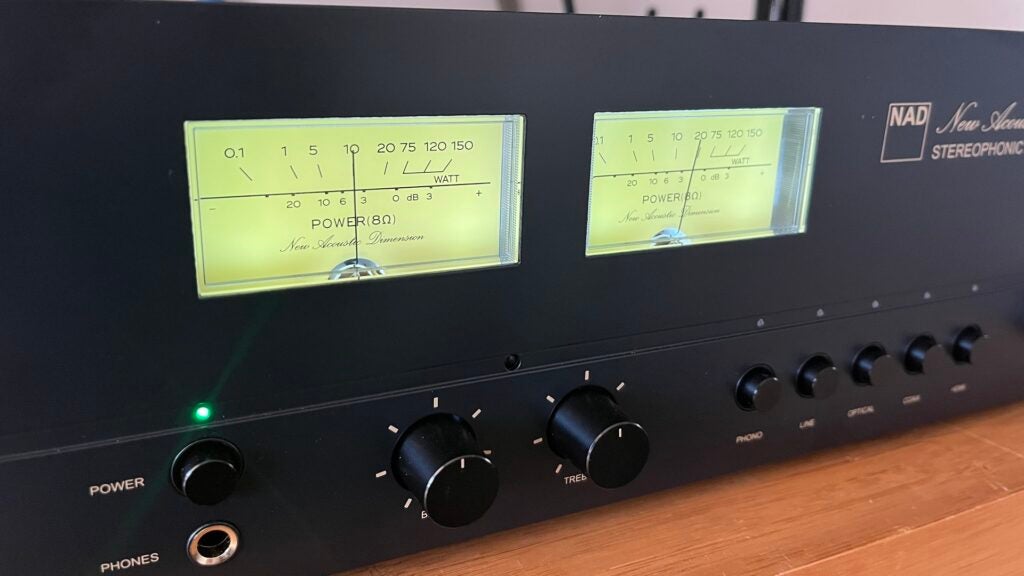
As well as illuminated VU meters, the fascia also also features more buttons and rotary dials than have graced the front of an integrated amplifier for many years – and the words ‘New Acoustic Dimension’ and stereophonic also feature. It may be loudspeakers that are at the forefront of the current trend for ‘modern retro’ hi-fi, but these numerous vintage touches elevate the C3050 LE well beyond mere pastiche.
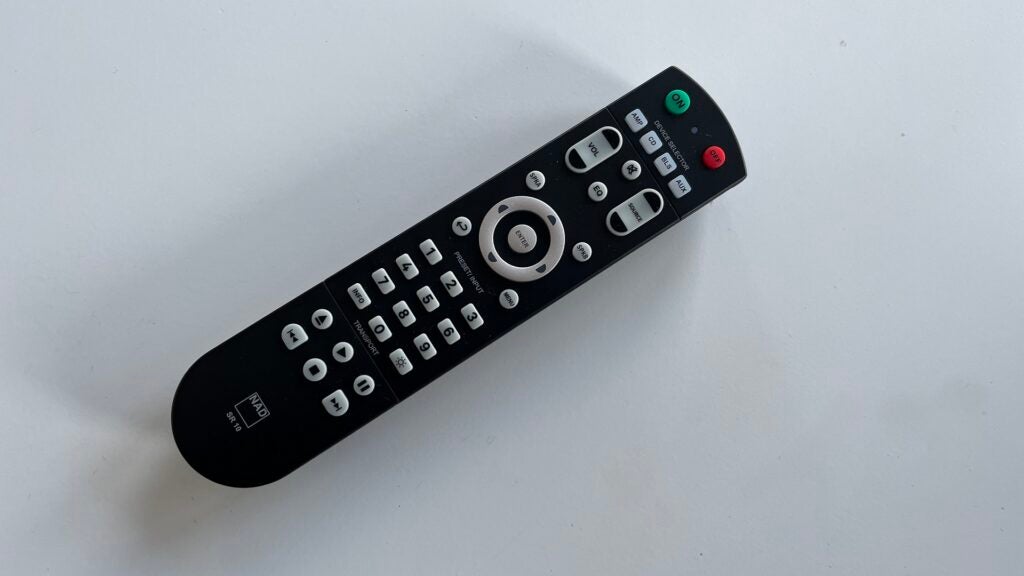
It’s a shame the remote control that accompanies the amplifier isn’t a similar sort of throwback – but given that a) this amp isn’t built in any kind of quantity, and b) most of the handset’s functions can be taken care of by the BluOS control app, I guess it wouldn’t have made a whole lot of economic sense to design a ‘back in the day’ remote control too.
So the C3050 LE looks just the ticket if you want to set your watch back 50 years. As long as you don’t look too closely at some of the functions of the fascia buttons, though, and you don’t look at the back panel at all…
Features
- Numerous inputs, from phono stage to HDMI eARC
- BluOS control app
- 100 watts per channel
When it comes to features, the NAD C3050 LE’s subterfuge doesn’t last. It might try its hardest to look like a throwback, but its specification is ideal for Q1 of the 21st century.
For starters, this is a Class D amplifier – none of your last-century Class A inefficiency. There was a time Class D was derided as a triumph of affordability and space-efficiency over audio performance – but that was back in the day. At this stage of the game, Class D has nothing to prove. NAD is quoting a power output of 100 watts here, into both 4 and 8ohm loads. It’s able to drive two pairs of speakers simultaneously if you so desire – a rotary dial on the fascia takes care of business.
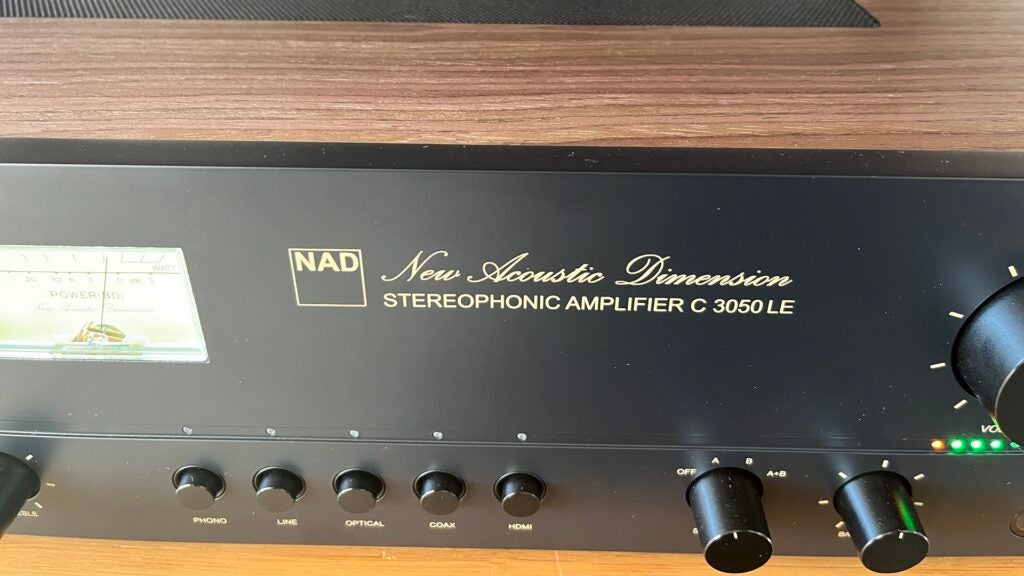
The suite of connectivity that’s on offer here makes the case for the C3050 LE as a paradigm of modernity even more forcefully. Beyond the two sets of loudspeaker cable binding posts, physical connectivity consists of a moving-magnet phono stage, a line-level analogue input, optical and coaxial digital inputs, an Ethernet input, a USB slot and an HDMI eARC socket. There is a pre-out for a subwoofer and another pair for use with a power amplifier.
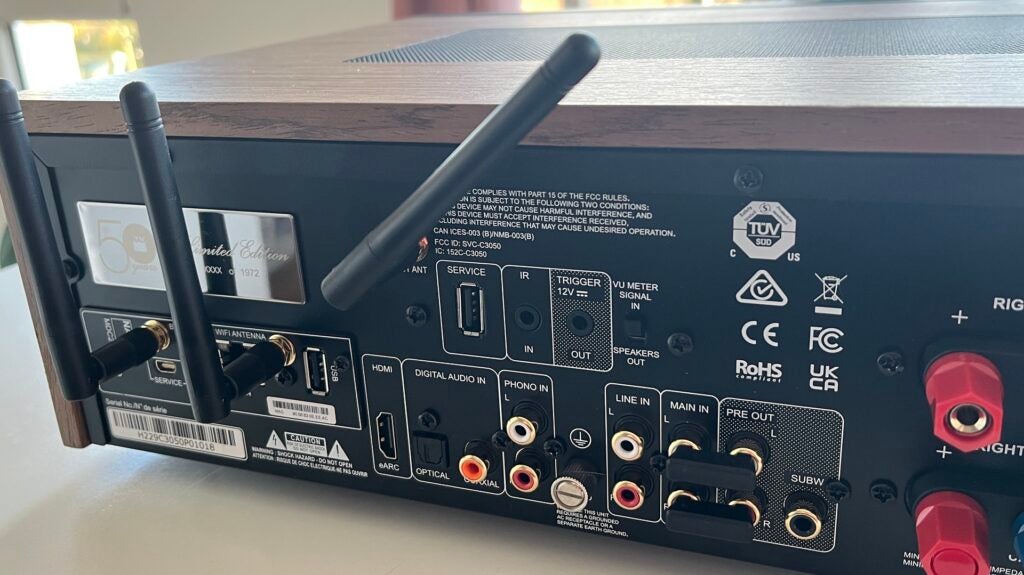
Wireless connectivity is possible via Bluetooth (5.0 with up to aptX HD codec compatibility) and Wi-Fi – the NAD’s rear panel is fairly bristling with wireless antennae. All digital inputs, whether wired or wireless, lead to a 24-bit/192kHz DAC, with support for numerous file types including FLAC and MQA. On the front panel, meanwhile, there’s a 6.3mm socket for use with headphones.
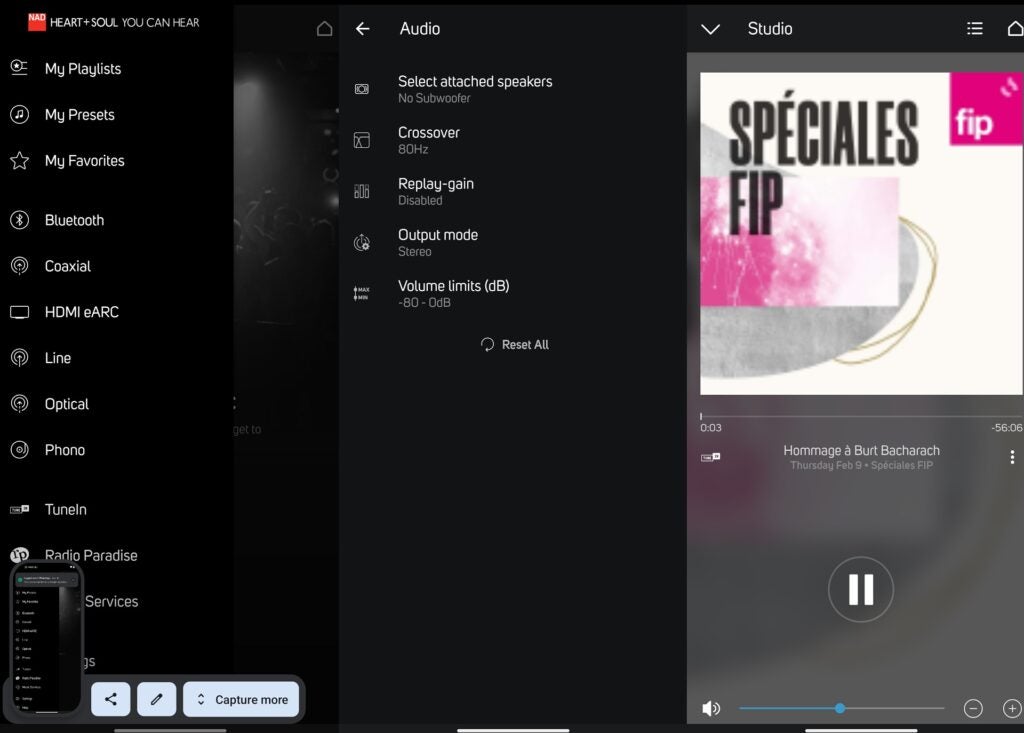
The NAD is part of the BluOS ecosystem, and so is compatible with the almost entirely admirable BluOS control app. Rather wilful font aside, it’s an excellent interface that covers every eventuality in some style, from integrating your favourite music streaming service(s) and internet radio stations to setting volume limits and other minutiae.
Of course, you may prefer to use the nicely tactile buttons on the fascia, and who could blame you? Bear in mind that the volume control takes way too many turns to make worthwhile adjustments to volume levels, though…
Sound Quality
- Detailed, balanced and consistent sound
- Excellent powers of organisation and control
- Not the most powerful-sounding amp around
As far as setting up goes, there’s a little more to the NAD than hook up speakers, attach source(s) and supply with mains power. Like a few recent NAD amplifiers, the C3050 LE is compatible with Dirac Live Room Correction calibration software – there’s a mic and a USB dongle in the box. Download the software, follow the instructions and Dirac will do its utmost to calibrate the amp’s output to best suit the environment in which you’ve positioned it. This free taster works from 20Hz to 500Hz, but chucking some money Dirac’s way gets you the full (20Hz – 20kHz) experience.
Given that problems, should you have any, are likely to be at the bass end of the frequency range, though, the free experience has every chance of sorting you out. And after that, you’re free to enjoy the NAD C3050 LE in the knowledge that it knows and understands your listening space.
Despite the (very useful) HDMI eARC socket, the NAD is primarily a stereo music device – and so that’s how most of our testing is undertaken. A turntable is hooked to the amp’s phono stage, a CD player to the digital coaxial input, and an Android smartphone with aptX HD codec capability is used for wireless streaming.
And no matter which source is in play, no matter the sort of music that’s deployed (I go from a vinyl copy of Prince’s Sign o the Times to a Bluetooth stream of Weyes Blood’s It’s Not Just Me, It’s Everybody via a CD copy of Public Image Limited’s Poptones), the C3050 LE proves a consistent, and unflappable, device.
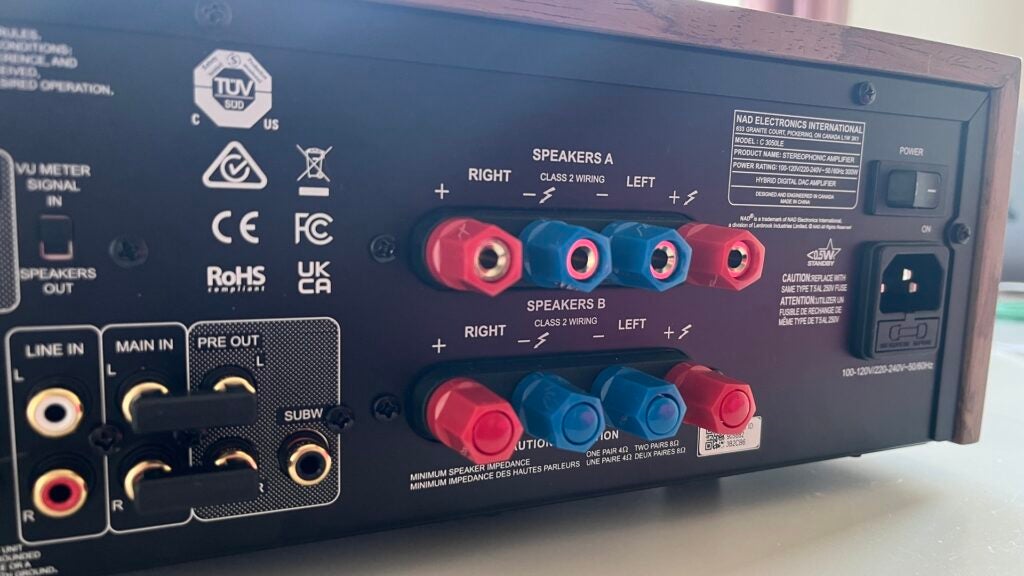
The positives of its performance far outweigh the negatives, so I may as well get those out of the way early on, in order to have a run at what exactly is so likeable about it. So yes, it’s not the most demonstrative amplifier you ever heard – there’s a neutrality about its sound that could quite easily be confused for a lack of animation in the wrong circumstances.
The wrong circumstances in this instance, really, begin and end with the loudspeakers the NAD is driving – if they are similarly impartial, the sound could conceivably seem a little detached. And despite the power rating, the C3050 LE just doesn’t sound all that powerful – it does well to maintain its sonic attitude no matter the level at which you’re listening, but really blasting it out just doesn’t seem to be on the menu.
Otherwise, the news is pretty good. Certainly the NAD maintains a consistent tonality from the bottom of the frequency range to the top, and manages to integrate every area of the frequency range with the sort of smoothness that makes transitions all-but imperceptible.
Bass sounds are deep, textured and information-heavy – there’s plenty of insight into the finest details of low-frequency activity, and the sort of rigorous attention paid to attack and decay that means rhythmic positivity is pretty much guaranteed. There’s nothing frantic about the way the C3050 LE presents music, but it definitely doesn’t hang about – music has authentic (but well-controlled) momentum.

The opposite end of the frequency range attacks with similarly polite determination, and treble sounds have proper substance to complement their bite and shine. Detail levels are equally high, and the NAD keeps a close eye on the sort of transient high-frequency information that’s such a big part of, say, the Prince recordings. The balance the C3050 LE strikes at the top end, making treble sounds crisp but never allowing them to become edgy or hard (even at what passes for big volumes here) is impressive too.
In between, the midrange is focused and spacious enough to allow vocalists of all kinds the space to express themselves. The NAD’s ability with soundstaging really comes into its own here – without losing any of its winning sensation of unity, the C3050 LE organises a stage to the point that every element of a recording is locked in place, free from interference from any other element.
The wide-open spaces and big areas of silence that are a big part of the Prince recordings (yes, him again) are given appropriate prominence – and those silences are dark and absolute. Detail levels are just as high here as elsewhere, and the result is a level of eloquence and poise that’s by no means a given even when spending this sort of money on two-channel amplification. The NAD sounds naturalistic and convincing through the midrange – with just a little more positivity it would be absolutely ideal.
The low-level dynamics of a recording, the tonal variations that are apparent especially when listening to a solo instrument, are identified and contextualised with real confidence. The more visceral dynamics of hushed middle eight to final climactic chorus are made apparent too – but the C3050 LE doesn’t quite go the whole hog. Other price-comparable designs have greater headroom and breathe more deeply.
Happily, everything that’s enjoyable about the sound the NAD makes is carried over to the HDMI eARC socket. Just as surely as with music, of course, the quality of the audio signal going into the C3050 LE dictates the quality of sound that comes out – but as an elegant and fuss-free way of putting a rocket up the sound of your TV, this amplifier is profoundly useful.
Latest deals
Should you buy it?
If you can find one: NAD is promising a vanilla C3050, but the LE has a charm that only comes from being hard to find.
If you’re a heartless speculator: Yes, you could probably sell yours for more than you paid (but you’re a soulless misery-guts if you do).
Final Thoughts
There has to be more to a retro product than simply looking old-fashioned – that’s something Volkswagen and Fiat understood when reimagining the Beetle and the 500, but it’s something that seems to have eluded whole swathes of the hi-fi industry for whom retro simply means retrograde.
But with its ‘happy birthday to us’ limited edition C3050 stereo amplifier, NAD has demonstrated that a vintage appearance doesn’t preclude some state-of-the-art functionality. It won’t please those owners who are enjoying the limited nature of their nice new/old amplifier, but NAD should really consider making this amp, wooden casework and all, a fixture in its product catalogue.
How we test
We test every amplifier we review thoroughly over an extended period of time. We use industry standard tests to compare features properly. We’ll always tell you what we find. We never, ever, accept money to review a product.
Find out more about how we test in our ethics policy.
Tested with real world use
Tested for a week
FAQs
The C3050 was announced at Munich High End in May of 2023. This review you’re reading is of the limited edition model but availability of that model is less with only a few units still available as of June 2023.
Full specs
Sustainability
Trusted Reviews’ holds the fact that global warming is not a myth as a core value and will continuously endeavour to help protect our planet from harm in its business practices.
As part of this mission, whenever we review a product we send the company a series of questions to help us gauge and make transparent the impact the device has on the environment.
We currently haven’t received answers to the questions on this product, but will update this page the moment we do. You can see a detailed breakdown of the questions we ask and why in our sustainability info page.



